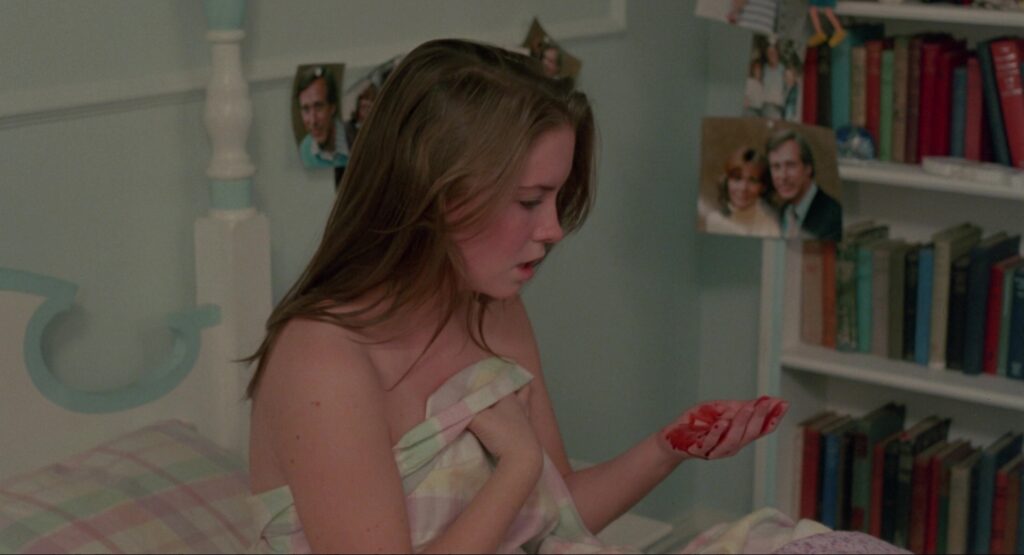
In a sleepy American suburb, where the leaves have begun to change, there lives a seventeen year old girl named Christie (Rachael Kelly). Christie could be any teenage girl if it weren’t for the fact that she believes that her stepfather Paul Fox (David Brooks) is trying to murder her mother (Marie Masters). Try as Christie might to convince people that she’s telling the truth about her stepfather no one dares to believe her. That is, until it is too late.
So goes the plot of Michael Winner’s Scream For Help (1984). One of the most bonkers thrillers of the eighties, Scream For Help lives in that aesthetic middle ground between Harriet The Spy (1996) and Straw Dogs (1971). In typical Michael Winner fashion Scream For Help features a bevy of bare breasts, a moderate amount of gore, and at least one homicidal maniac. But Scream For Help also features one of the most frank discussions of a hyman breaking. There’s an odd tonal balance between the campy renderings of girlhood that would feel more at home in an after school television special and the violence that is the trademark of the Canon Group.
This delicate balance of aesthetics is actually aided by Winner’s shortcomings as a filmmaker rather than hindered by them. Even one of Winner’s most cinematic films like Scorpio (1973) still feels more like the movie of the week. The workman like style of Winner fits the “after school special” qualities of Scream For Help like a glove.
The first hour of the film is solidly entrenched in the campy melodrama of a television movie. This is where Christie does all of her sleuthing to prove her stepfather’s guilt; owing more than a little to Nancy Drew. The final thirty minutes are where things shift into the home invasion narrative. While the dramatic form changes the cinematographic style does not. Winner persists in shooting scenes with a flat, shallow focus and garish light fills.
Scream For Help is unlike any other film of this genre. It is too thrillers what Tough Guys Don’t Dance (1987) is to film noir. Coincidently both films were produced and released via Canon Pictures. These films make a strong argument on behalf of the notion that there is, in fact, an art too artlessness.
